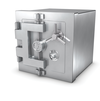Using GRUB 2
|
At one time, the first operating system on a hard drive was the only one. Today, users expect more. Not only should different systems run in parallel on a computer, but you should expect various boot media and individual configurations. Current Linux systems depend on GRUB 2 and its flexibility. With GRUB 2, you can customize the boot process, secure a system against unauthorized access, and make mobile devices distinct.
What is GRUB 2?
GRUB stands for GRand Unified Bootloader [1]. The program helps the user select an operating system from a memory device – be it hard disk, CD/DVD, USB stick, or SD card – and starts it up. On startup, GRUB first reads from the storage medium the boot information in the Master Boot Record (MBR; or in ROM in mobile devices). After a short welcome screen, GRUB displays a selection menu for your operating system then gives control to the (Linux) kernel of the system you select.
GRUB has been in version 2 since June 2012 – the pre-release since Ubuntu 9.10 appeared as version 1.98/1.99. Although you can theoretically continue to use GRUB 1 (0.97), which is now officially called GRUB Legacy, GRUB 2 was completely rewritten and is not backward compatible because the bootloader is not supposed to carry any old baggage around with it.
[...]
Buy this article as PDF
Pages: 4
(incl. VAT)






